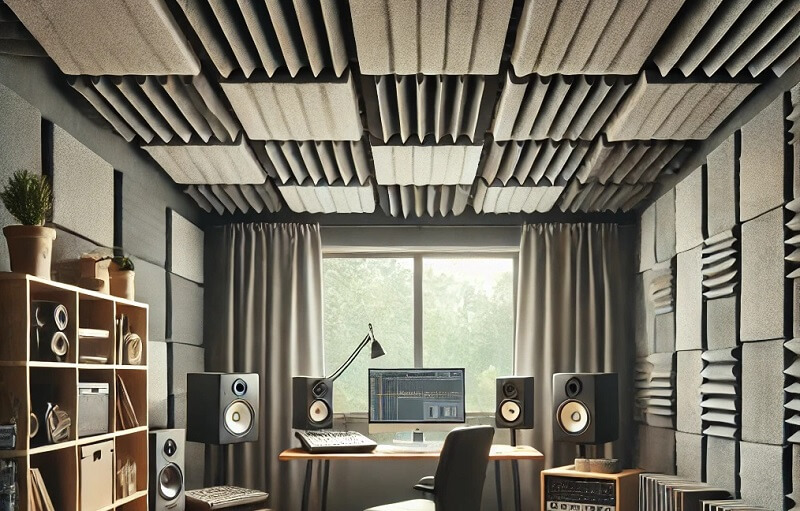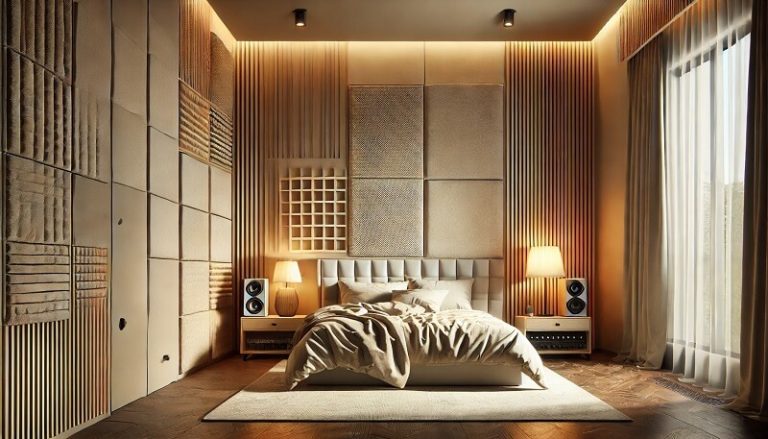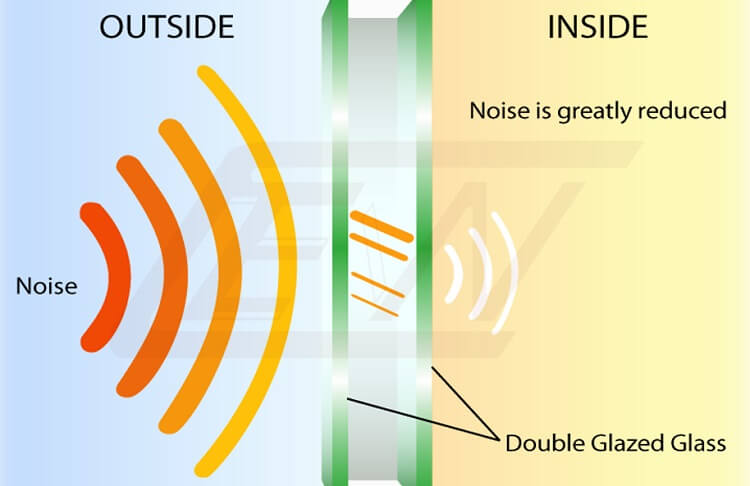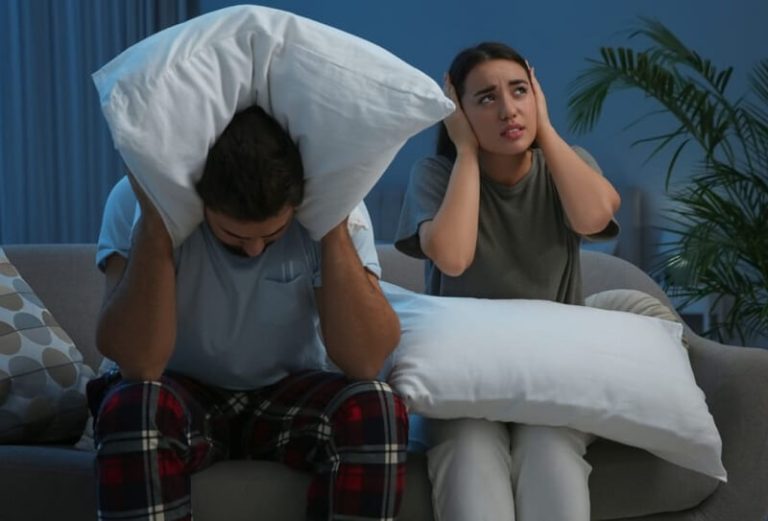
Noise pollution is a constant challenge in our modern world, especially for those working from home or using a home studio. Whether it’s the rumble of traffic, the drone of appliances, or the clamor of family life, unwanted noise can seriously disrupt focus and productivity. If you’re asking yourself, “how can I soundproof a home office or studio?”, this article offers practical solutions for creating a quieter and more productive workspace, addressing everything from simple DIY fixes to more advanced soundproofing techniques.
By understanding the nature of noise and implementing targeted strategies, you can transform your home office or studio into a haven of tranquility.
This comprehensive guide explores various soundproofing methods, catering to different budgets and technical skills. We’ll delve into Identifying Noise Issues, selecting the right materials, and implementing effective soundproofing techniques for walls, windows, doors, floors, and ceilings. Let’s embark on the journey to a noise-free workspace, empowering you to work, create, and relax in peace.
Identifying Noise Issues
Before embarking on any soundproofing project, it’s crucial to pinpoint the sources of unwanted noise.
This allows you to target your efforts effectively and maximize your investment. Noise can be broadly categorized into external, internal, and vibrational noise.
External Noise
External noise originates from outside your home, such as traffic, construction, airplanes, or neighborhood activities. Common entry points include windows, doors, and poorly insulated walls.
Single-pane windows are particularly vulnerable, allowing significant sound transmission. Gaps around doors and windows, as well as poorly sealed exterior walls, also act as conduits for external noise. Analyzing the frequency of the noise is also helpful.
Low-frequency sounds (like traffic rumble) are harder to block than higher-frequency sounds.
Internal Noise
Internal noise emanates from within your home, including conversations, television audio, footsteps, or the hum of appliances. Hard surfaces like tiled floors, bare walls, and high ceilings exacerbate this issue by reflecting sound waves, creating echoes and a generally noisy atmosphere. Thin interior walls, hollow-core doors, and uninsulated ductwork can further amplify these disturbances.
Understanding the paths these sounds take is key to effective internal soundproofing.
Vibration Transmission
Noise often travels through structural vibrations in floors, ceilings, and walls. Footsteps from upstairs neighbors, the vibrations of appliances, or the bass from a nearby sound system can all disrupt your work or creative flow. Addressing these transmission paths often involves decoupling surfaces—creating a break in the structural connection—or adding damping materials to absorb vibrational energy.
Essential Soundproofing Materials
Choosing the right materials is crucial for effective soundproofing.
Here’s an overview of some key options:
Mass Loaded Vinyl (MLV)
Description: MLV is a dense, flexible material specifically designed to block sound transmission. Its high mass effectively dampens sound waves. It’s available in various thicknesses, with thicker MLV providing greater sound reduction (typically measured in Sound Transmission Class or STC ratings).
Applications: MLV can be applied to walls beneath drywall, used as an underlayment for floors, or hung behind furniture to dampen noise.
Advantages: Highly effective at blocking airborne sound, relatively easy to install, versatile for DIY and professional projects.
Acoustic Panels
Description: Acoustic panels are designed to absorb sound waves, reducing echoes and reverberation within a room, thus improving the overall acoustic quality.
They come in various shapes, sizes, colors, and materials (foam, fabric-wrapped fiberglass, etc.)
Applications: Mount acoustic panels strategically on walls or ceilings to minimize sound reflections and control reverberation time (RT60). They are particularly beneficial in studios, home theaters, or meeting rooms.
Advantages: Easy to install, customizable to match room aesthetics, effective in controlling mid- and high-frequency sounds, improves speech clarity and sound quality within a space.
Weatherstripping and Door Sweeps
Description: These affordable solutions seal gaps around doors and windows, preventing sound leakage and drafts. Various types are available, including foam tape, rubber seals, and felt strips.
Applications: Apply weatherstripping tape to door frames and window sashes.
Install door sweeps at the bottom of doors to seal the gap between the door and the threshold.
Advantages: Cost-effective, renter-friendly, easy to install without permanent modifications. Improves energy efficiency in addition to sound reduction.
Rugs and Carpets
Description: Thick rugs and carpets with dense padding can absorb impact noise (footsteps, dropped objects) and soften the acoustic environment within a room. The thicker and denser the rug and padding, the more effective they are.
Applications: Place area rugs with sound-absorbing padding in high-traffic areas, beneath desks, or in hallways to minimize noise.
Advantages: Dual functionality for noise reduction and enhanced comfort.
Adds warmth and style to a room.
Steps to Soundproof Walls
Adding mass and sealing air gaps are key to soundproofing walls:
- Add Mass: Install a layer of MLV directly to the existing wall, ensuring complete coverage. Then, install a new layer of drywall over the MLV. This adds significant mass to the wall assembly, effectively blocking sound transmission.
Another option is to use specialized sound-dampening drywall, which is denser than standard drywall.
- Seal Gaps: Use acoustic caulk to seal any gaps or cracks around electrical outlets, switches, light fixtures, vents, and wall seams. Even small air gaps can significantly compromise sound insulation.
- Decoupling (Advanced): For maximum soundproofing, consider decoupling the new drywall from the existing wall using resilient channels. These metal channels create an air gap and interrupt the vibration path, further reducing sound transmission.
Steps to Soundproof Windows
Windows are a major source of noise infiltration.
Here’s how to improve their soundproofing:
- Upgrade Windows: Replace single-pane windows with double- or triple-paned windows with laminated glass. The multiple layers of glass and the laminated layer provide significantly better sound insulation. Consider using gas-filled windows for even better performance.
- Window Inserts: For a more budget-friendly option or in rental situations where window replacement isn’t feasible, consider using acrylic window inserts.
These fit inside your existing window frame, creating an additional air gap and reducing noise transmission.
- Soundproof Curtains: Thick, multi-layered soundproof curtains can help absorb sound and reduce noise transmission. While they won’t block as much sound as window replacement or inserts, they offer a cost-effective and easily implemented solution.
Steps to Soundproof Doors
- Replace Doors: Replace hollow-core doors with solid-core doors. Solid-core doors are much denser and provide better sound insulation.
Consider doors specifically designed for soundproofing, which often incorporate additional mass and damping materials.
- Seal Gaps: Apply weatherstripping around the entire door frame to seal air gaps. Install a door sweep at the bottom of the door to close the gap between the door and the threshold.
- Add Mass: Consider adding a layer of MLV to the door, covered by a decorative fabric or another layer of material. This can further enhance sound insulation.
Specialized soundproof blankets can also be hung over the door.
Managing Floors and Ceilings
Floors
- Rugs and Padding: Place thick area rugs with dense, sound-absorbing padding on floors to minimize impact noise and reduce sound transmission to lower levels. Look for rugs with a high Noise Reduction Coefficient (NRC) rating.
- Underlayment: Install soundproof underlayment beneath flooring materials like hardwood, laminate, or tile. Various underlayment options are available, including cork, rubber, and specialized acoustic underlayment materials.
Choose an underlayment with a high Impact Insulation Class (IIC) rating.
Ceilings
- Acoustic Tiles or Foam: Install acoustic ceiling tiles or foam panels to absorb sound and reduce reflections within the room. These can also help to reduce noise transmission from above.
- Resilient Channels: Decouple drywall from ceiling joists using resilient channels. This creates an air gap that interrupts the vibration path, preventing sound from traveling directly through the ceiling structure.
This is particularly effective for reducing impact noise from above.
- Suspended Ceilings: Install a suspended ceiling with sound-absorbing tiles or baffles. This creates a significant air gap and can dramatically reduce noise transmission.
Real-Life Applications
FAQ
What is the quickest way to soundproof a room?
For quick improvements, use weatherstripping on doors and windows, and hang soundproof curtains.
These are easy to implement and require minimal investment.
Can I soundproof a rented space?
Yes, renters can use non-permanent solutions like acoustic panels, rugs with thick padding, soundproof curtains, and door sweeps. These can be removed without damage.
How much does soundproofing cost?
DIY soundproofing can range from a few hundred dollars for basic materials to over a thousand dollars for more extensive projects. Professional installations typically cost significantly more.
Conclusion
Creating a soundproof home office or studio enhances your productivity, focus, and overall well-being.
By identifying your specific noise challenges and implementing the appropriate soundproofing techniques outlined in this article, you can transform your workspace into a productive and peaceful environment. Remember to consider your budget, technical skills, and the specific noise issues you’re facing when choosing your approach. Start with simpler solutions and gradually incorporate more advanced techniques as needed to achieve your desired level of soundproofing.






